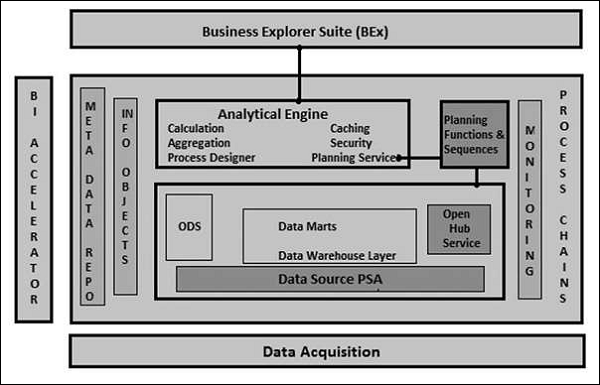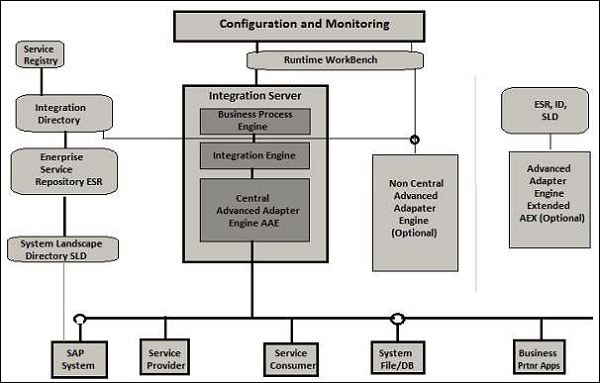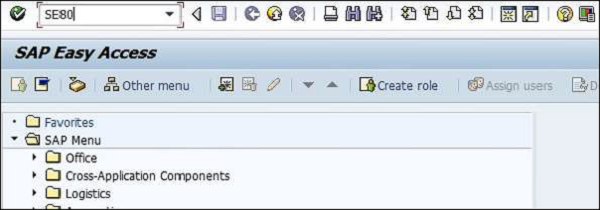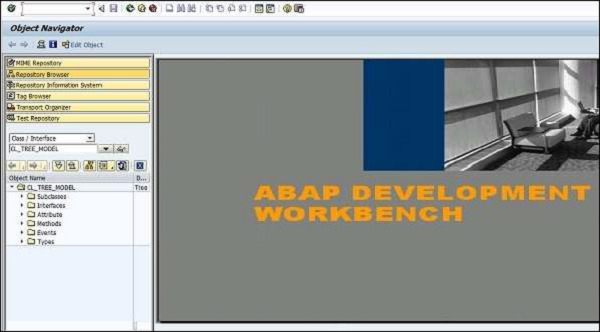
- SAP NetWeaver - Home
- SAP NetWeaver - Introduction
- SAP NetWeaver - Architecture
- SAP NetWeaver - Components
- SAP NetWeaver - Release Details
- SAP NW - NW Version in ECC System
- SAP NetWeaver - Setting Up NW
- SAP NW - Installation Options
- Passing Parameters for Installation
- SAP NW - Transport Management
- Managing Background Jobs
- SAP NW - NW Business Client
- SAP NW - Service Configuration
- Business Client Installation
- NWBC Transaction & Navigation
- SAP Application based on NW
- SAP NetWeaver - Portal
- SAP NetWeaver - Create a System
- Enterprise Portal Roles & Group
- SAP NW - Knowledge Management
- SAP NW - KM Administration
- SAP NetWeaver - Developer Studio
- SAP NetWeaver - Web Content
- Process Integration Options
- SAP NetWeaver - Gateway
- SAP NetWeaver - Security
- SAP NetWeaver - PFCG Roles
- SAP NW - Authentication Methods
- SAP NW - Communication Security
SAP Applications based on NW
SAP NetWeaver is known as open technology software component that provides you a platform to run critical business applications and integration between people, processes, and information. It allows the composition, provisioning, and management of SAP and non-SAP applications across a heterogeneous software environment.
The following table defines the main use cases of SAP NetWeaver and its key area −
| S.NO | Use Case & Description |
|---|---|
| 1 |
Data Warehousing SAP BW |
| 2 |
Building Integration scenarios SAP Process Integration PI |
| 3 |
Mobilizing Business Processes SAP NetWeaver Mobile |
| 4 |
Building Composite Applications SAP Composition Environment |
| 5 |
Integration with SAP Enterprise Portal SAP Enterprise Portal |
| 6 |
Application Development ABAP ABAP Development on NetWeaver Application Server ABAP |
SAP NetWeaver BW
SAP Business Intelligence (BI) means analyzing and reporting of data from different heterogeneous data sources. SAP Business Warehouse (BW) integrates data from different sources, transforms and consolidates the data, performs data cleansing, and storing of data as well. It also includes data modeling, administration, and staging area.
The data in SAP BW is managed with the help of a centralized tool known as SAP BI Administration Workbench. The BI platform provides infrastructure, which include OLAP Processor, Metadata Repository, Process designer, and other functions.
The Business Explorer (BEx) is a reporting and analysis tool that supports query, analysis and reporting functions in BI. Using BEx, you can analyze the historical and current data to different degree of analysis.
SAP BW is known as an open and standard tool, which allows you to extract the data from different systems and then sends it to the BI system. It also evaluates the data with different reporting tools and you can distribute this to other systems.
The following diagram shows an open, broad and standard-based Architecture of Business Intelligence.

SAP Process Integration
SAP Process Integration (PI) is a part of the SAP NetWeaver platform. It is called SAP NetWeaver Exchange Infrastructure (XI) in NetWeaver 7.0 ehp2 and older versions. SAP NetWeaver Process Integration is a part of the NetWeaver software component and is used for exchange of information in the companys internal system or with external parties.
SAP PI/XI enables you to set up cross-system communication and integration, and allows you to connect SAP and non-SAP systems based on different programming languages like Java and SAP ABAP. It provides an open source environment that is necessary in complex system landscape for the integration of systems and for communication.
SAP Process Integration is a middleware to allow seamless integration between SAP and non-SAP application in a company or with systems outside the company.
SAP PI architecture consists of multiple components which are used at design time, configuration time, and runtime. In SAP PI, the sender system is known as the source and the receiver is called the target system and the architecture is known as Hub and Spoke structure. The Spoke is used to connect with external systems and the Hub is used to exchange messages.
A SAP PI system is divided into the following components −
- Integration Server
- Integration Builder
- System Landscape Directory SLD
- Configuration and Monitoring

SAP NetWeaver Mobile
SAP NetWeaver mobile is a solution which is used to develop mobile solution for SAP Business Suite. You can use different tools to deploy and operate mobile applications for occasionally and always connected mobile devices.
There are two possible scenarios for SAP NetWeaver mobile −
Occasionally Connected
In occasionally connected SAP NetWeaver mobile scenario, a mobile device contains a mobile client and a web server, database layer, and business logic.
In this scenario, use can work offline and doesnt wait for network connectivity to middleware to work on any critical tasks assigned to them. NetWeaver mobile device also contains tool for data synchronization and data replication to make data available to the back-end system.
Always Connected
In always connected scenario, to manage business operations, the mobile device is always connected to the middleware. Mobile applications are available on the central server and there is no mobile client. The users have to connect to the server to access these applications.
Applications are developed and deployed on the central server and it is rendered differently as per different mobile devices.
In both the mobile scenarios, SAP NetWeaver Mobile acts as the middleware for enterprise mobility. Following functions are provided using this middleware −
- Messaging and Network Monitoring
- Device Management
- Data distribution
- Enterprise Identity
- Security
Application Development ABAP
ABAP stands for Advanced Business Application Programming, a 4GL (4th generation) language. Currently it is positioned, along with Java, as the main language for SAP application server programming.
Web Dynpro is a standard SAP UI technology that allows you to develop web applications using graphical tools and development environment integrated with ABAP workbench. The use of graphical tools reduces the implementation effort and you can better reuse and maintain the components in ABAP workbench.
To access Web Dynpro runtime environment and graphical tools in ABAP workbench, you can use Transaction code - SE80.
Both these solutions are developed on NetWeaver platform and provides application and web-developed environment to users.


Web Dynpro is an ABAP environment for web development and is based on the Model View Controller (MVC) concept of UI programming. It is available for both Java and ABAP as per the platform, and supports similar functions.
Web Dynpro has the following features −
- Separation of display and business logic
- Easy change in the layout with the use of graphical tools
- No platform dependency of interfaces
Following are the key concepts as part of Web Dynpro architecture −
Metadata
Web Dynpro provides you with an environment for the development of web-based applications and you can use graphical tools to define Web Dynpro application in the form of metadata in application development. You can also define your own events; however, event handling should be defined in a separate code and that has to be executed when an event is triggered.
The user interface in Web Dynpro application consists of small elements defined by using Web Dynpro tools. You can also change or enhance the user interface by changing these elements at run time or integrate the elements again.
Graphical Tools
There are a wide range of graphical Web Dynpro tools that you can use to generate webbased applications. You dont need to create source code for this. Following are the key features of graphical tools in Web Dynpro application −
- Define properties of user interface elements
- Data flow
- User interface layout
For all these properties, you can use graphical tools without creating a source code.
Business and Application Logic
Web Dynpro allows you to run your application on the front-end, and the back-end system can be accessed using the service locally or via a remote connection. Your user interface is maintained in Dynpro application and a persistent logic runs in the back-end system.
You can connect Web Dynpro application to the back-end system using an adaptive RFC service or by calling a web service.
MVC Programming Model
Web Dynpro applications are based on MVC model −
Model − This allows access to back-end data in a Web Dynpro application.
View − This is used to ensure the representation of data in a web browser.
Controller − This is used to control the communication between Model and View where it takes the input from the users and gets the processes data from the model and displays the data in the browser.